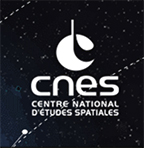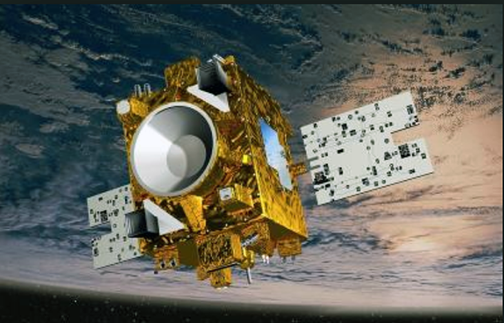
CNES teams have achieved a first with the innovative passive de-orbiting of the Microscope satellite (MICROSatellite à trainée Compensée pour l'Observation du Principe d'Equivalence) after its two-year science mission and six months of valuable technology experiments.
Microscope’s mission has come to an end with the depletion of the nitrogen fuel reserves needed for the satellite’s precise control microthrusters. Without this fuel for its drag-compensation system, the satellite is no longer able to deliver science data.

Artistic rendition of the Microscope satellite.
Image is courtesy of CNES.
Operations to passively de-orbit Microscope without expending fuel, performed by teams at the Toulouse Space Centre since the start of this week, have proved especially innovative. They began by passivating the satellite to make it safe for de-orbiting and ensure that no source of chemical, pneumatic or electrical energy will pollute outer space.
The next key step in the sequence involved deployment of IDEAS (Innovative DEorbiting Aerobrake System), a system designed by CNES consisting of two 4.5 meter inflatable booms wrapped in membranes to increase the satellite’s atmospheric drag surface area. It is the use of these booms in the real-life conditions of space that makes this passive de-orbiting sequence particularly innovative and unique.
Thanks to this system, Microscope should re-enter and burn up in Earth’s atmosphere in approximately 25 years’ time, as required by the French Space Operations Act (FSOA) effective since 2008. The estimated time it would have taken Microscope to re-enter the atmosphere had the IDEAS system not been used was 73 years.
Microscope is, therefore, the first operational satellite to be de-orbited in this manner. The satellite's retirement from service illustrates CNES’s commitment to mitigating pollution and the proliferation of space debris in LEO.
Executive Comment
After the success of this delicate de-orbiting phase, CNES President Jean-Yves Le Gall commented that CNES’s teams have again demonstrated their know-how and expertise in passively de-orbiting Microscope, which is a truly remarkable feat. It follows this mission’s unprecedented scientific success in applying an innovative operational technology to verify the equivalence principle. The Microscope science teams are continuing to analyze all of the data collected by the mission and their results are expected at the end of next year.

